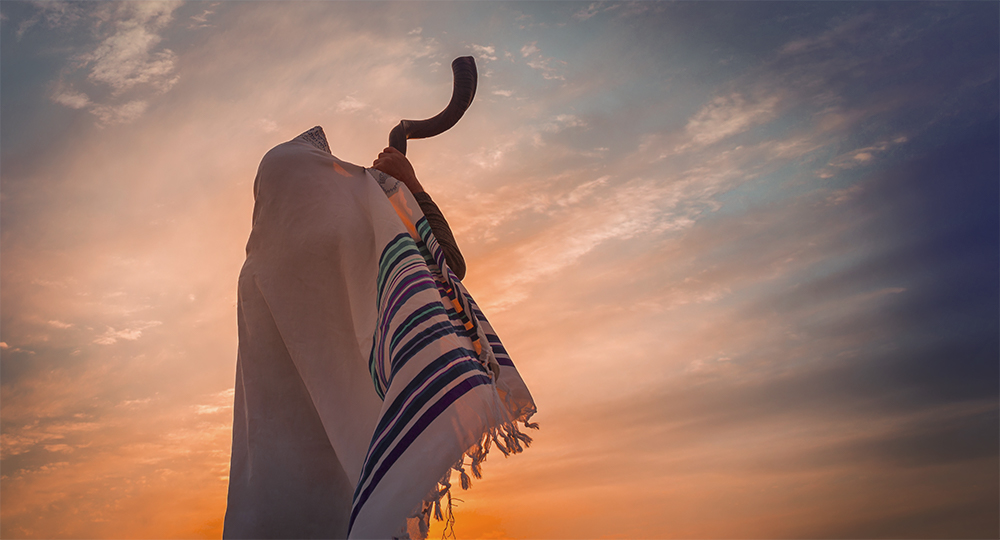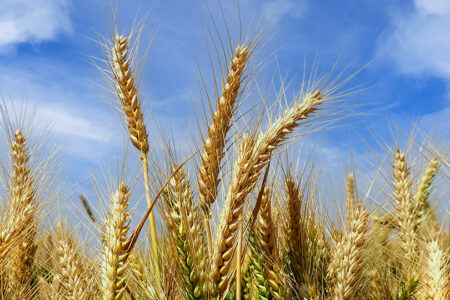Tekiah, Shevarim, Teruah
A look at Rosh Hashanah and Yom Kippur
Growing up, I had an annual August ritual of asking my parents two questions: When is the first day of school? Are the Jewish holidays early or late this year?
The answer to my first question told me how many blissful days of freedom I had left before school started. The answer to my second question told me how many school days I had to endure before Rosh Hashanah, Yom Kippur, and Sukkot. They were my tickets for time off from class.
All three holidays occur within 15 days of each other in the same Hebrew month, Tishrei. Tishrei on the lunar calendar corresponds to September/October on our solar calendar.
These holidays are important to Jewish people because they point to the need for forgiveness of sins and remind them of God’s unique relationship with the nation of Israel.
They also are important to Bible-believing Christians because they unveil a wonderful picture of God’s eternal plan to restore His creation, broken by sin, by ushering in His Kingdom and returning conditions to the way they were in the Garden of Eden.
Rosh Hashanah
This year, Rosh Hashanah (Hebrew for “head of the year”) begins at sundown on Labor Day, September 6. It is the Jewish year 5782, calculated to be the number of years since God created Adam and Eve. Biblical Judaism believes in a young Earth.
To better understand Rosh Hashanah, the modern version of the biblical Feast of Trumpets, it is helpful to look at its other names:
Yom Teruah (Day of Shofar Blowing). This name reminds Jewish people of the importance of the shofar, the ram’s horn. In the synagogue, Genesis 22 is read in the liturgy, recalling Abraham’s obedience in taking his son Isaac to Mount Moriah to offer him as a sacrifice to God. When the Angel of the Lord intervened (v. 11), Abraham “lifted his eyes and looked, and there behind him was a ram caught in a thicket” (v. 13). Abraham then sacrificed the ram in Isaac’s place.
The ram’s horn became an important tool in Bible days. It was used to call people together. In the military, it called soldiers to battle. Civilians used it to call people to safety behind the city walls. And in worship, it called people together to pray.
During Rosh Hashanah, it is considered a mitzvah (good deed) both to blow the shofar and hear it because it reminds the Jewish people of God’s unique covenant with them. The different types of shofar blasts sounded in the synagogue are called tekiah, shevarim, teruah, and tekiah gedolah.
Yom Hadin (Day of Judgment). According to Jewish tradition, God opens books in heaven and judges everyone. Individuals are sealed either in the Book of Life for another year or in the Book of Judgment. Explained Rabbi Ahron Lopiansky,
God’s judgment on Rosh Hashana is far more profound than common judgment. He is not only looking to see if our activities are meritorious or not, He is measuring our deeds in the perspective of eternity. . . . Thus Rosh Hashana is a day of judgment on who will enter this most exclusive club of eternity along with which deeds, and what is to be discarded.1
Yom Hazikaron (Day of Remembrance). This is not to be confused with the modern Israeli Remembrance Day for all Israelis who died serving their country in the military. According to Jewish Bible scholar Baruch J. Schwartz, this memorial of blowing the trumpets is to remind God the Israelites are His people and “to secure His aid.”2 He said teruah “literally means ‘raise a cry, shout.’”3
These names point out two main themes of this holiday: repentance (Hebrew, teshuvah) and judgment.
Though Rosh Hashanah marks the beginning of a new year, frivolous celebrations are not practiced. Rather, people practice kheshbon nefesh (an accounting of oneself) and take a spiritual inventory. They believe God has been recording the number of sins they commit versus the number of mitzvot (plural of mitzvah). Everyone strives for fewer sins and more mitzvot.
People pray in synagogue, hoping God will inscribe their names in the Book of Life. Worshipers also greet one another by saying, “May your name be inscribed in the Book of Life.” Even the holiday’s food (apples and honey) expresses hope for a sweet new year.
Yom Kippur
Immediately following Rosh Hashanah come the 10 Days of Awe or Repentance. They culminate with Yom Kippur, the Day of Atonement.
During this time, observant Jews reflect, repent, and seek restitution. Some practice Tashlich (to cast away), a ceremony that involves journeying to a body of flowing water and casting leavened bread into the water to symbolize casting their sins far away from themselves. This practice is taken from Micah 7:19: “You will cast all our sins into the depths of the sea.”
At the end of the 10 Days of Awe comes Yom Kippur, the Day of Atonement. It is on this day that Jewish people believe their names will be sealed either in the Book of Life or the Book of Judgment. Whereas repentance and remembrance are part of Rosh Hashanah, sacrifice, substitution, and sealing characterize Yom Kippur.
According to Leviticus 16 and 23:26–32, the high priest entered once a year into the Temple’s holy of holies and sprinkled blood on the mercy seat to cover up, or atone for, Israel’s sins.
Today, of course, there is no Temple. The Romans destroyed the second Temple in AD 70. Consequently, there is no functioning priesthood and no sacrifice. To compensate, the rabbis changed the observance by substituting fasting and prayer as a means of atonement based on the command “afflict your souls” (23:27).
So, while Yom Kippur remains the holiest day on the Jewish calendar, it focuses on the individual. The liturgy is filled with expressions of confession (viduim) and repentance (teshuvah). One of Judaism’s best-known prayers begins, “For the sins which I have sinned . . . ” Each time someone admits to a sin, he or she is, in reality, begging God for forgiveness.
Many observant Jewish people believe that the harder they are on themselves, the more likely God will be to forgive them. The seriousness and intensity of these 26 hours are the complete opposite of the joyous holiday that follows: the feast of Sukkot.
A Look at the Future
As believers, we know that Rosh Hashanah, Yom Kippur, and Sukkot highlight Israel’s future repentance, redemption, and refreshment—all made possible through Jesus, Israel’s Messiah and the Savior of the world.
We also know Scripture teaches a day is coming when the Jewish people will repent and mourn (Zech. 12:10), and all will be saved in a day (Isa. 66:8; Rom. 11:26)—Yom Kippur. They will see their Messiah return (Rev. 19) to the Mount of Olives (Zech. 14:4), where He will tabernacle with them (Sukkot) on Earth. The land will be refreshed (v. 8) because Messiah Jesus will reign in righteousness as King of kings and Lord of lords for 1,000 years (Rev. 20:4).
What a day it will be! “Ten men from every language of the nations shall grasp the sleeve of a Jewish man, saying, ‘Let us go with you, for we have heard that God is with you’” (Zech. 8:23).
So we wait for the day when God’s words to Israel through the prophet Jeremiah will come to pass:
“Yes, I will rejoice over them to do them good, and I will assuredly plant them in this land, with all My heart and with all My soul.” For thus says the LORD: “Just as I have brought all this great calamity on this people, so I will bring on them all the good that I have promised them” (Jer. 32:41–42).
Amen and amen.
ENDNOTES
-
-
- Rabbi Ahron Lopiansky, “Rosh Hashanah: Why Judgment Day?” Aish.com, September 5, 2010 (tinyurl.com/RL-aish).
- Baruch J. Schwartz, “Leviticus,” The Jewish Study Bible, ed. Adele Berlin and Marc Zvi Brettler (Oxford, UK: Oxford University Press, 2004), 265, n Lev. 23:24.
- Ibid.
-








